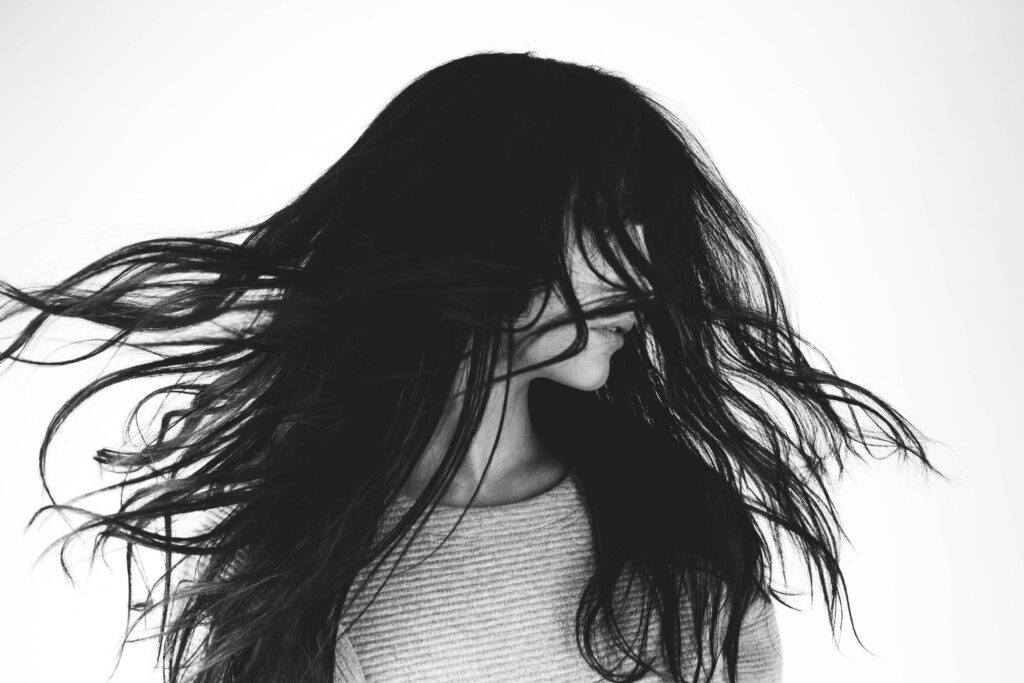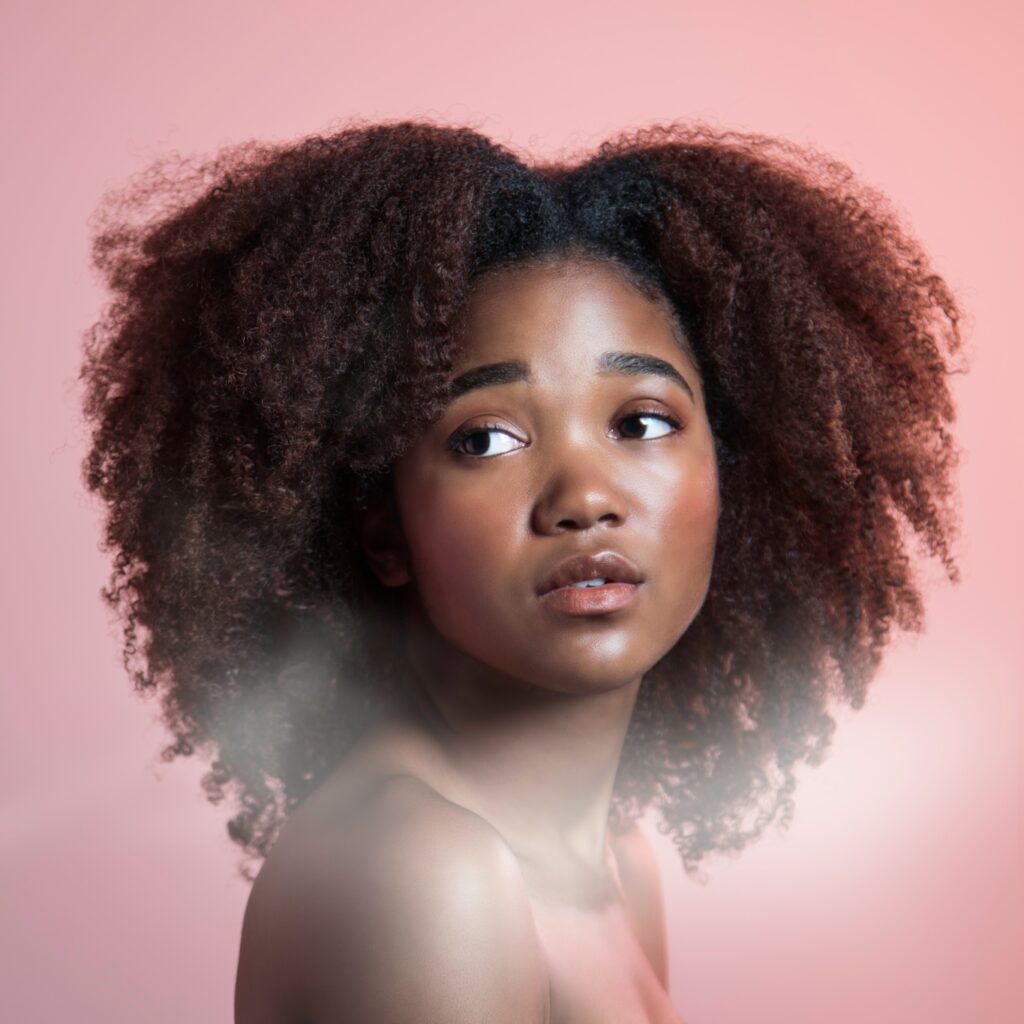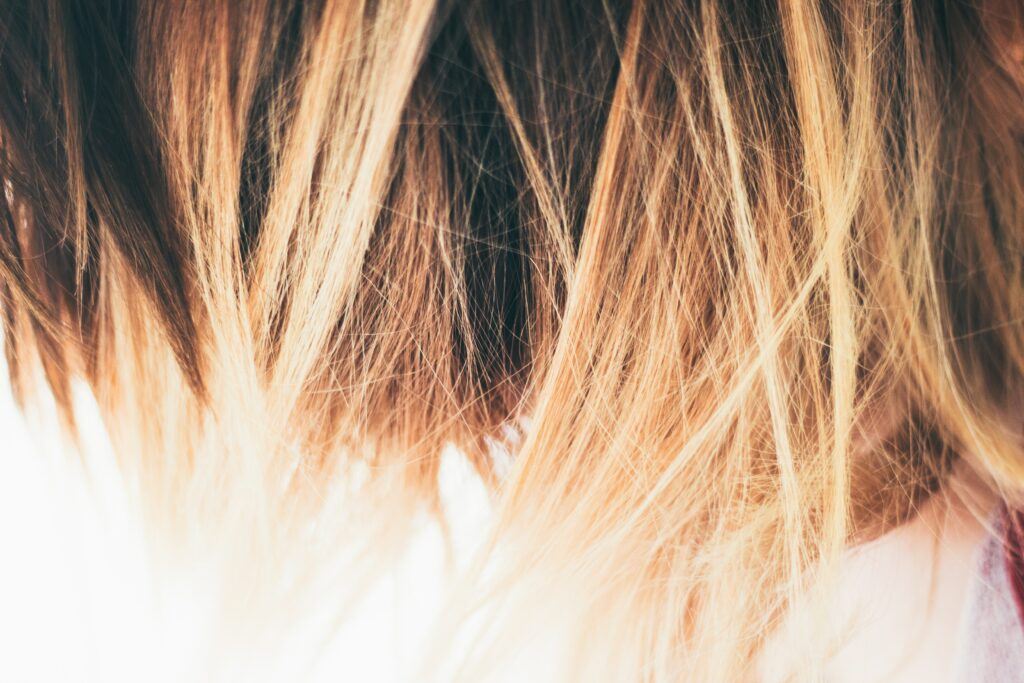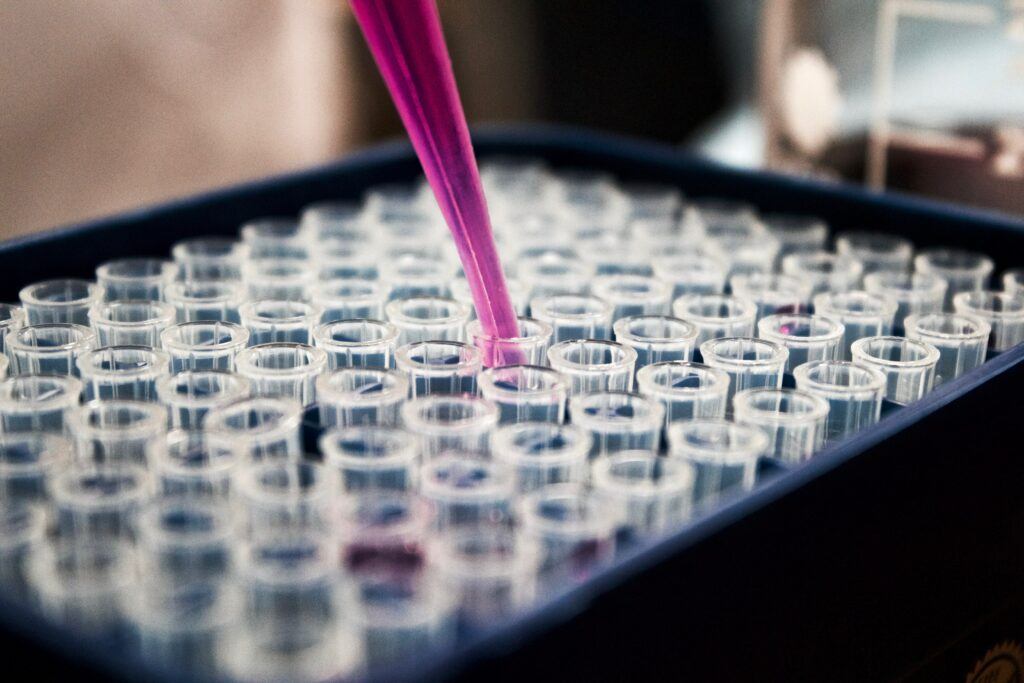In this article, “What is the Composition of Hair? | An Introduction,” we will look at the different elements, structure, and types of human hair.
A shaft of hair comprises three main layers, which are cuticle, cortex, and medulla. Each layer has different characteristics and function. We will also include the surrounding components.
The shape of the follicle determines the pattern of the hair shaft. Likewise, the width determines its thickness and strength. Additionally, different types of hair grow on different parts of the body.
How is hair affected by electrolysis? We’ll take a brief look.

Got Hair? | What is It?
Hair is an outgrowth of skin similar to fingernails and toenails, although not as hard. It can be found on most areas of the body except mucous membranes, the lips, tongue, palms, and soles of feet.
The only living part of hair is in the follicle below the skin. The visible shaft has no life.
Lanugo: This is fine hair covering an embryo. It is usually shed before birth.
Vellus: It covers most of the body. It is soft, short, and has no pigment due to the absence of the medulla. Vellus is formed in the sebaceous lobe.
Terminal: These hairs are found on the scalp, underarms, pubic regions, men’s face, and also other areas of the body. Abnormalities in women may cause “male-pattern” hair on the face, shoulders, chest, and back.
This is known as hirsutism.
A vellus hair, on occasions, may start growing downwards into the follicle and become a terminal hair. This happens when it’s stimulated by a hormonal imbalance or external irritation.
In the dermis, the second layer of skin, terminal hair begins its cycle in the follicle. This is an extension of the skin forming a pocket. Here is where you’ll find components directly or indirectly a part of hair structure.

Types of Hair | Who Gets What?
Why is hair straight, wavy, curly, or kinky? That’s a common question.
Straight: When hair comes out of a follicle that is round, it is straight.
Wavy: An oval follicle produces wavy hair.
Curly: Hair from a flat follicle comes out curly.
Kinky: This type of hair is usually tightly curled indicating it’s produced from a flat follicle.
Ethnicity tends to play a significant role in the type of hair an individual has. As a result, it may not always be evident especially when persons are from mixed nationalities.
It is important for dermatologists, electrologists, and laser technicians to know their clients’ background before treatment.
Composition: Elements
What is the composition of hair? You may have heard of keratin, a protein found in hair.
There are at least five main elements that make up keratin:
- Carbon, hydrogen, nitrogen, oxygen, and sulfur.
- Hydrogen, nitrogen, and oxygen are gases.
- Carbon and sulfur are solids.
Keratin is also made up of several amino acids, which are the building blocks of proteins.
Composition: Cross Section
We will see three layers when a strand of terminal hair is dissected. The cuticle is the outer layer. The cortex is the middle layer. The medulla is the inner layer.
Cuticle: This hard, scaly outer layer overlaps in a shingle-like manner. It gives hair its elasticity and transparency.
Cortex: Here we will find elongated, keratinized cells and the pigment, melanin, which gives hair its color.
Medulla: This innermost layer is mainly hollow, contains some cells, and found only in terminal hair.

The following surround each strand of hair:
Follicle: This is where activities of the hair shaft take place. A follicle is a continuation of the epidermis subsequently forming a pocket in the dermis.
Inner Sheath: The cuticle overlaps with this lining securing it to the follicle.
Outer Sheath: This outer lining helps to protect and also forms the hair shaft below the skin.
Papilla: The blood supply providing nourishment is found here. Nerve endings are also in this region.
Bulb: This is the end of the hair root which fits over the cone-shaped papilla.
Sebaceous Glands: These glands produce sebum, oils which lubricate the skin and hair.
Pilosebaceous Unit: It comprises the follicle, sebaceous glands, and arrector pili muscle. The units together form the pilosebaceous system.
When a person is cold or frightened, the arrector pili muscle contracts. This action causes “goosebumps” and hair to stand straight.
An increase in knowledge will result in a better understanding of things that affect hair negatively or positively. Imbalances, diseases, and external influences will also affect the growth and well-being of hair.
Professionals such as dermatologists, endocrinologists naturally have a special interest in the composition of skin. This study is also important to hair removal specialists, including electrologists.

The Moisture Factor | Permanent Hair Removal
We must look at the relationship between hair composition and permanent hair removal methods.
An electrologist or laser hair removal specialist is concerned with more than just removing hair. In addition, she must take several factors into consideration in order to deliver effective treatment.
This is why a thorough consultation is essential. These will include questions about genetics, water intake, nutrition, health, medication, lifestyle, and abnormalities.
The moisture factor at the base of the follicle will determine how easily the hair comes out during treatment. Likewise, the amount of water the client drinks, the skin type, and genetics play a role in the moisture content.
This may seem insignificant; however, the moisture also contains salt. It is important in the creation of lye, also called sodium hydroxide. Lye aides in the destruction of hair follicles in an effective electrolysis treatment.
The Whole Matter | Hair Wrap Up
So here’s the thing: A study of hair includes its origin, growth, and texture. It also includes the surroundings components and factors that affect it.
Hair is made up of several elements, comprised of smaller units. Keratinized protein is the major component. It also comprises different structures coming together to form one unit.
Specialists in the treatment of skin and hair removal must be knowledgeable about its components. You will benefit also from knowing as much as possible for your own sake.
I hope this short article, “The Composition of Hair | An Introduction,” has benefited you in some way. There is a vast amount of information on the subject and related matter.
This was not intended to go into greater scientific details. It serves only as an introduction. Its intention is that those who are at a loss and need to be pointed in the right direction will find it beneficial.
Feel free to leave your questions and comments below. I will do my best to address them.